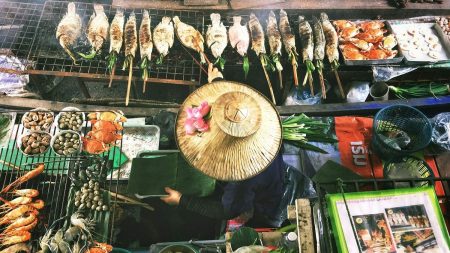A Taste of Autumn: Cotignac’s October Food Celebrations
In the charming Provençal village of Cotignac, October transforms the community into a vibrant celebration of culinary heritage. As autumn paints the surrounding landscape in warm hues, locals embrace a time-honored relationship with food that transcends mere sustenance. The tenth month brings a special energy to this picturesque village, where harvesting, preserving, and sharing meals becomes a communal expression of cultural identity.
The village squares and narrow cobblestone streets come alive with seasonal markets, where farmers proudly display their autumn bounty – from plump pumpkins and chestnuts to the prized black truffles of the region. Multi-generational families work together, harvesting olives from ancient groves that have sustained their ancestors for centuries. In many households, grandmothers share preserved recipes with younger generations, ensuring that traditional methods of making tapenade, ratatouille, and fig jam continue uninterrupted. These aren’t merely cooking lessons but the transmission of cultural wisdom, connecting Cotignac’s residents to their Provençal roots while honoring the seasonal rhythms that have governed life here for generations.
Community spirit reaches its peak during October’s weekend festivals, where long tables stretch through the village center, laden with regional specialties. Neighbors who might exchange only brief greetings throughout the year now share intimate conversations over locally-produced rosé wine and hearty daube provençale. The local restaurant chefs collaborate with home cooks for special dinners highlighting indigenous ingredients, reinforcing the connection between the land and local cuisine. These gatherings strengthen social bonds and remind everyone that in Cotignac, food represents much more than physical nourishment—it embodies shared history, collective memory, and communal identity.
Behind the festive atmosphere lies serious agricultural tradition. Many families still maintain small plots of land where they cultivate vegetables using methods passed down through generations. October marks the critical transition to winter preparations—the last chance to preserve summer’s abundance before winter arrives. In kitchens throughout the village, the air fills with aromatic steam as women and men alike prepare confits, dry herbs, and fill cellar shelves with preserved vegetables. The traditional knowledge involved in these practices represents a form of resilience and self-sufficiency that modern Cotignac residents proudly maintain, even as contemporary conveniences become increasingly available.
Food in October Cotignac also serves as a bridge between the village’s historic isolation and its growing connection to the wider world. While fiercely protective of culinary traditions, locals have gradually incorporated new influences brought by seasonal visitors and international residents drawn to the region’s beauty and lifestyle. This culinary evolution happens cautiously—innovations must respect the fundamental principles of local gastronomy: seasonality, simplicity, and respect for ingredients. October’s harvest dinners might now feature subtle fusion elements, but the soul of Provençal cooking remains intact, preserving the distinctive flavors that make Cotignac’s food culture unique.
As the month progresses and temperatures gradually cool, October’s food rituals in Cotignac culminate in preparations for All Saints’ Day celebrations. Families bake special breads and pastries, including the traditional pompe à l’huile sweetened with orange flower water. These treats connect the living to departed loved ones, demonstrating how food in Cotignac transcends ordinary nourishment to become a vehicle for memory, spirituality, and continuity. When November arrives, bringing shorter days and cooler temperatures, Cotignac’s pantries and cellars stand fully stocked—a testament to October’s industrious food activities. The village settles into a quieter rhythm, nourished not only by preserved harvests but by the strengthened community bonds that their shared food traditions have once again renewed.








